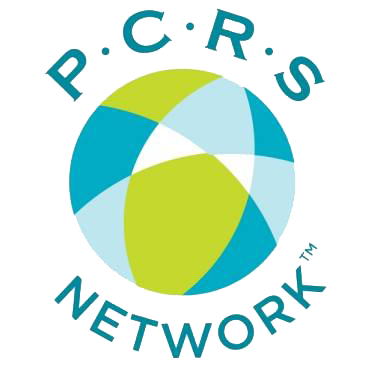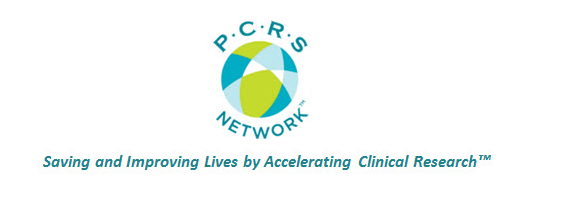Clinical research sites (Sites) play a crucial role in accelerating clinical research. The Pharmaceutical industry relies on the independent research conducted at these Sites to assess the efficacy of new drugs developed to help save and improve lives.
When it comes to the financial health of Sites, besides negotiating a budget that covers all direct and indirect costs, and that provides a reasonable profit, nothing is more important than cash flow. Many a profitable Site has closed simply because it ran out of cash while waiting for Sponsor payments.
Because so many Sites initiated to conduct studies under-perform and fall short of Sponsor expectations for enrollment, Sponsors are reluctant to provide study advances. Increased frequency of payment requires additional work on the part of Sponsors or their CROs, so they prefer to pay less frequently than is the norm in other industries. In the absence of start-up fees sufficient to cover the actual costs of start-up, significant advances or timely monthly payments, Sites are left to finance the majority of start-up costs, out-of-pocket costs like subject stipends and outside services (e.g. radiology, specialists, study supplies, etc.), and staff and overhead costs from their own resources.
Even though a Site may generate accrual based revenue by completing study visits, payments from Sponsors may lag by 60 to 120 days or more, depending on the frequency of payments negotiated. While accounts receivable may grow, Sites frequently suffer negative cash flow on the majority of studies they conduct.
Contributing to Sites cash flow challenge is the general lack of reasonably priced financing options. Banks typically lack the experience with the industry necessary to understand that a receivable that is over 90 days with a blue chip sponsor is typically a perfectly good, and ultimately collectible, receivable. Consequently, accounts outstanding over 90 days are typically excluded from the calculation of receivables on which the bank will lend. Further, limitations on concentration of receivables (i.e. having in excess of a set percentage of total receivables with one Sponsor or CRO) reduce the availability of funds to which a Site has access. As a result, Sites often can only borrow a relatively small percentage of their outstanding receivables.
Non-bank accounts receivable financing options, while available to established sites, often are unavailable to new sites, and are expensive compared to conventional bank financing.
While accounts receivable financing is a contributor to a Site’s cash flow challenge, this article will focus on the other elements of cash flow. We will address Site financing in our next article.
Cash is King!
So what can a Site do to avoid becoming another failed Site statistic?
First, they must understand their costs and only accept budgets that truly cover all costs, plus contribute to building a reserve. After that, they must understand the components of cash flow, and actively and regularly manage each element. While this may seem obvious, in practice, it is often one of the most challenging aspects of running a successful site.
Cash flow is comprised of inbound and outbound flows of cash resulting from fees generated and costs incurred. A few of these include:
- Start-up fees
- Subject Visit fees
- Invoiceable items
- Out of Scope Fees
- Out-of-pocket expenses
- Study staff compensation
- Stipends
- Outside services (e.g. radiology, local labs, consultation fees of specialists, etc.)
- Overhead (e.g. rent, utilities, insurance, etc.)
The outbound cash flow begins before a study even starts enrolling, while the inbound cash flow lags based on a number of factors including, but not limited to:
- Frequency of payment (e.g. monthly, bi-monthly, quarterly, etc.)
- Payment triggers (entry into EDC vs. monitored)
- Timing of payment (i.e. how long from the time a payment is authorized does it take to be processed and received by the Site)
- Holdback rate
The fate of each of these is established at the time the budget and CTA are negotiated. Additionally, incorrect assumptions made by Sites extend already delayed receipt of payments further.
Let’s consider a few of the assumptions that often prove painful for Sites.
One assumption is that Start-up fees and advances are paid automatically once the Clinical Trial Agreement (CTA) is executed. Even when a CTA obligates the Sponsor or their CRO to process a payment upon execution of the CTA, often that payment doesn’t occur without prompting. That is not meant to imply that Sponsors intentionally delay payments. The clinical research enterprise is complex, and the systems used to track what is due to sites are often inadequate and cumbersome, which account for many delays. To ensure timely payment of start-up fees and advances, Sites should follow-up with Sponsor/CRO accounts payable immediately after the CTA is executed and confirm that these payments are in process.
Another assumption is that payments are automatically triggered based on EDC entry. Even when the terms of the CTA state such, Sites must understand that many Sponsor/CRO EDC systems are not integrated to their payment systems, so there is no “automatic” trigger of payment. Instead, it is up to the study Project Management team to periodically review study activity to determine which items are payable to the Sites conducting the study. This is a tedious task, fraught with potential for error. Release of items for payment are frequently missed, resulting in underpayments. If not caught by the Site prior to the next payment cycle, payment may be significantly delayed, and worse, if not caught prior to the expiration of any reconciliation period provided for in the CTA, the Site may never be paid for any fees that have been miscalculated or overlooked.
Still another contributor to a Site’s cash flow woes is the timing of when the payment is processed after it is deemed payable by the study management team. While some Sponsors/CROs process such payments promptly, others take a month or longer to process the payment, so monthly payment terms often become 60 days or more. Quarterly payments often are received by the Site over 120 days after the event occurred that created the receivable (e.g. execution of the CTA, completion of a study visit, clearing of queries).
In the meantime, Sites routinely pay their employees, landlord, and vendors. So while cash flows out, prospects for receipts are often far in the future and the Site struggles financially.
Take Control of Your Cash Flow
The good news is that the solution to managing a Site’s cash flow is within its control. The challenging news is that it requires discipline and consistent application of sound financial management practices to achieve. The return on the investment in this challenging discipline can make the difference between success and failure.
As mentioned previously in this article, the first step is to understand your costs and only accept budgets and payment terms that meet your mission and business objectives. Whether you will profit or lose money on a study is initially determined by the budget you negotiate and the terms of payment you agree to.
After that, in addition to enrolling well and performing quality work, Sites must meticulously track every revenue and cost reimbursement item in an accounts receivable management system or CTMS system that fully supports detailed accounting for and tracking of all amounts due, detailed application of payments received, and properly aged collections reports.
Start by creating a detailed process and a collections calendar. The process should detail how to properly capture and record every type of fee negotiated, every reimbursable item, and any out-of-scope procedures performed (i.e. extra labs, radiology, etc. required based on the professional judgment of the PI and upon approval by the Medical Monitor), so that no fee or reimbursement is overlooked. The collection calendar establishes the timing of reporting and frequency of accounts receivable evaluation and collection follow-up.
Next, choose a system to track every element of your study related to revenue and reimbursable items. After you have chosen a system, implement it and test the processes to ensure they are complete. Adjust the processes as necessary until it satisfies the requirement to be accurate and timely.
It is important to point out that Sites often miss receiving payments for miscellaneous fees and cost reimbursements items simply because they do not generate and send invoices. For example, Sites often assume that because an SAE is reported, the SAE fee negotiated will automatically be paid. Most often, these fees must be invoiced in order to receive payment. Another example would be reimbursement for an outside expense, such as a colonoscopy or ophthalmologic exam performed by an outside professional. Again, simply entering the occurrence in the EDC does not necessarily trigger payment. Some of these oversights can be very expensive for a Site if not discovered before the study closes completely and the opportunity to be reimbursed is lost, forever.
Track holdbacks separate from currently due fees. This allows for a more accurate reflection of amounts currently due and aids in reconciliation of final payments due upon study close-out.
After making any adjustments necessary to your processes, train all staff who will be involved in identifying and entering revenue generating or cost reimbursement events in how to process transactions. Entry of such information should be as close to real-time as possible, to avoid delays and the inevitable overlooked item.
Finally, make someone responsible and accountable for regularly assessing accounts receivable aging and timely follow-up of any payments that are past-due. The person assigned this responsibility must possess tact, courage, and tenacity. Because this person will routinely have to press for payment for unpaid items that are legitimately due, this is not a job for the meek or inexperienced.
When it comes to collections, persistence pays off, while patience is often met with further delays. That is why an important part of the collection process must include an escalation policy with specific timelines for escalation and involvement of whomever at the Site, Sponsor, or CRO is accountable and has the authority to resolve any issues that may arise.
When properly designed and implemented, a well thought out and managed accounts receivable management system will enhance a Site’s cash flow, adding critical working capital when needed.
We will address accounts receivable financing in our next blog.
Copyright © 2015, PCRS Network, LLC. ALL RIGHTS RESERVED WORLDWIDE.

